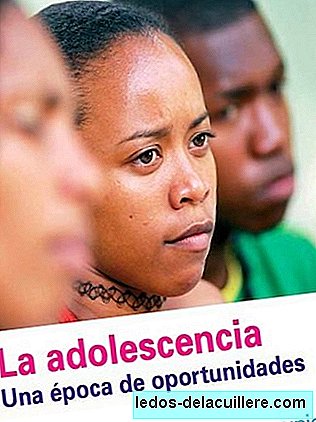
The report on the State of the World's Children 2011 gives a special role to adolescence, that period largely undefined, forgotten and unknown that goes far beyond the associated topics.
At document entitled "Adolescence: the age of opportunity", UNICEF points out that in 2009 there were more than one billion teenagers from 10 to 19 years of age in the world (about 1200 million). This represents 18% of the world population. In Latin America, the adolescent population represents 19% of the total population.
Sex and adolescence are intimately linked. Sexual initiation occurs mostly at this stage, and many teenagers around the world have sex.
The age of initiation, child marriage, access to contraceptive methods, sexual information, reproductive health, unwanted pregnancies... are some of the issues highlighted in this UNICEF document that we will summarize.
Let us think that adolescence is almost a decade of the life of the human being, a crucial decade that has its special importance in developing countries, where it is more evident that inequalities pass to the next generations when adolescents in poverty are mothers .
- In the report we see that household survey data indicate that in developing countries (excluding China) approximately 11% of women and 6% of men aged 15 to 19 claim to have had sexual intercourse before 15 years.
- To stay healthy and safe, adolescents need access to high-quality services and information about sexual and reproductive health from an early age.
- The gender disparities that exist in this issue are considerable: while adolescent boys have more frequent high-risk sex, they also tend to use condoms to a greater extent.
- The greater vulnerability of girls to the risks of sexual health and reproduction, as well as the dangers of protection related to gender in many countries and communities, makes it especially important to provide them with the necessary knowledge and access.
- A sensitive issue is child marriage, a tradition rooted in many countries and that is associated with a high probability of complications in pregnancy and childbirth which as we know are among the main causes of mortality of girls aged 15 to 19 years worldwide. Child marriages are also associated with an increased risk of sexually transmitted infections and unwanted pregnancies.
- In relation to sexual and reproductive health, insufficient control over their own fertility leads many adolescents to resort to unsafe abortions, running the risk of serious injury or death, and often in conflict with the law.
HIV and AIDS in adolescence
HIV and AIDS have a high incidence in certain parts of the planet and represent a great threat to the health and survival of the current generation of teenagers. Girls are at a much higher risk of contracting HIV than men, both as a result of increased physiological susceptibility and because they often lack control over sexual intercourse and condom use.
Sexual violence, both inside and outside marriage, increases the risk of infection. UNICEF, WHO and other international health organizations have set the goal of reducing this risk and the number of people affected, initiating information and awareness campaigns worldwide.
This work is important, since the investment in reproductive health services and the dissemination of solid knowledge about HIV empowers adolescents in their behavior and when making decisions, and there are indications that these efforts are beginning to give its fruits, although in this case there are also gender disparities.
Although the number of adolescent women who undergo HIV testing is greater, men tend to have extensive knowledge about prevention.
Making these services and information available during early adolescence (10 to 14 years) is essential to stop the spread of HIV; In late adolescence (15 to 19 years), the risk of infection for young people living in high prevalence countries is already very high, so the age must be advanced to inform these young people.
Definitely, The rights of adolescents in these areas are essential, and in general the "investment" in adolescence is the most effective way to consolidate the historical advances achieved in early and middle childhood for some years, although as we know also in that stage of life there is a lot of way forward and achievements What to get.












